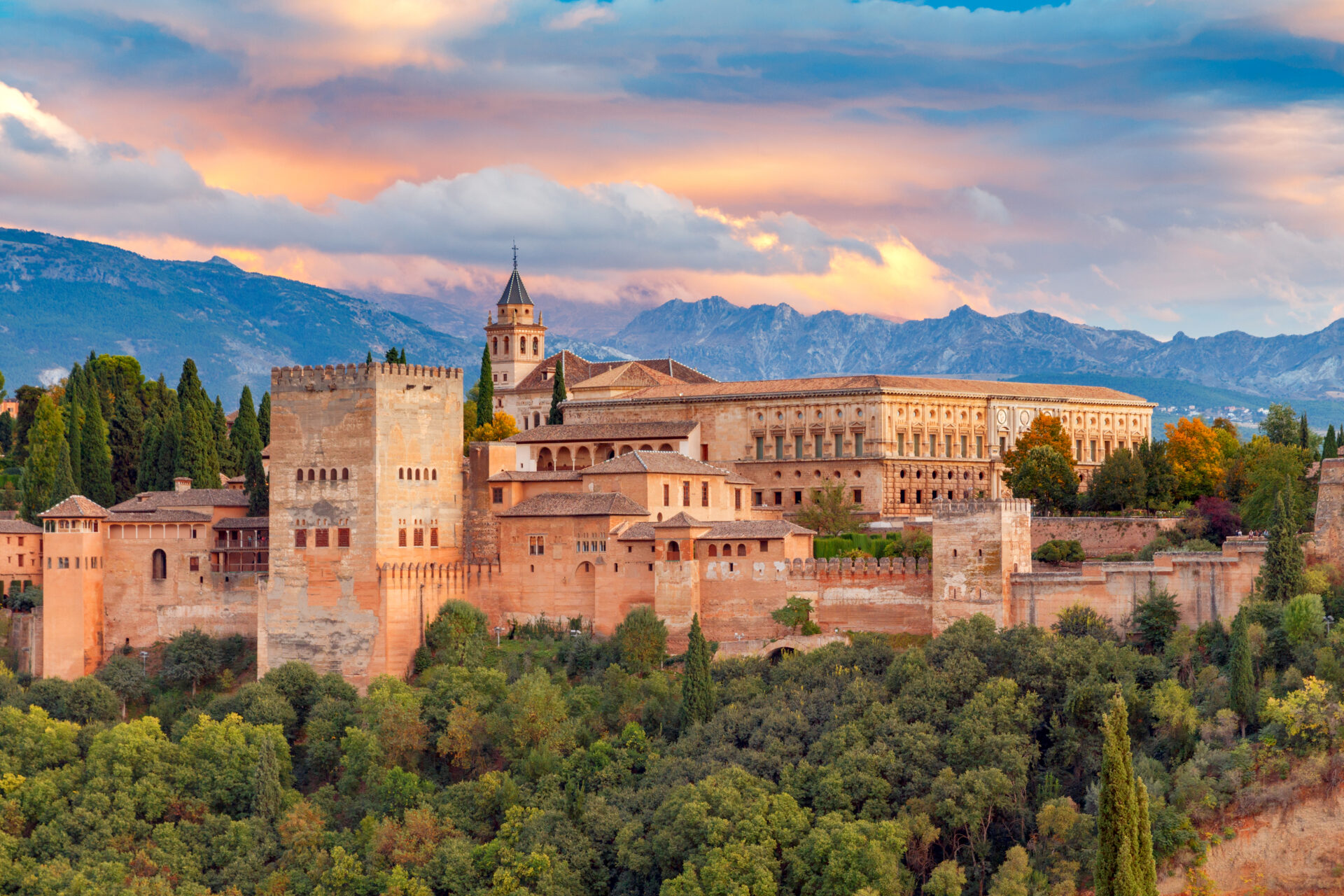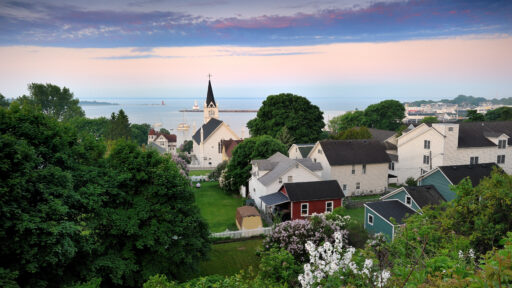If you’re looking for a destination that offers a perfect balance of sun, culture, and cuisine, Spain should be at the top of your list. With its stunning Mediterranean beaches, World Heritage cities, and multi-faceted culture, it’s no surprise that Spain is one of the most visited countries in the world.
To help you plan your trip, we’ve gathered together a list of eight must-see places to visit in Spain in 2024. From iconic landmarks to hidden gems, we’ve done all the hard work for you so you can sit back, relax, and enjoy all that this incredible country has to offer.
1. Madrid
Madrid is a must-visit destination for art lovers. The city boasts three world-renowned museums, the Museo del Prado, Reina Sofía, and Thyssen-Bornemisza, which make up the “Golden Triangle of Art.” These museums house some of the world’s most valuable art collections and are located along Madrid’s Paseo del Prado, which has been granted UNESCO World Heritage status.
In addition to its art scene, Madrid is known for its vibrant street culture. The historic La Latina neighborhood is home to Cava Baja, a street lined with cozy bars and taverns that are perfect for a wine-soaked tapas crawl. Join the locals as they hop from one bar to the next, sampling a selection of Iberian hams, charcuterie, and cheeses.
Don’t miss the Templo de Debod, an ancient Egyptian temple located right in the heart of Madrid’s city center. With year-round clear blue skies and vibrant barrios, Madrid is a lively city that offers something for everyone.
And this is just a taste of what Madrid has to offer.
2. Barcelona
Barcelona is a visually stunning metropolis that straddles the Mediterranean and the Pyrenees mountains. The city boasts of avant-garde architecture, city beaches, and a Gothic Quarter that dates back over 2000 years. The city is renowned for its modernist architecture, and no visit to Barcelona is complete without spending time at the Sagrada Família. This is the obra maestra of the illustrious Catalan architect and proponent of Modernism, Antoní Gaudí.
Gaudí’s influence on the city is everywhere, and it’s worth taking time to visit his other architectural jewels, such as the Casa Batlló, La Pedrera, and Park Güell. The Plaça Reial, located at the heart of the city’s two millennia-old Barri Gòtic (Gothic Quarter), is another place where Gaudí has left his legacy. The public square is lit up by decorative street lamps that were Gaudí’s first commissioned public work.
The Barri Gòtic is also home to the majestic La Catedral of the Holy Cross and Saint Eulalia, which was built over two centuries from the 13th to the 15th centuries. At the border of the quarter is Mercat de la Boqueria, one of the oldest markets in Europe. A planning tip for visiting Barcelona is to have a lunchtime visit to Mercat de la Boqueria. This is when the unassuming places to eat, run by charismatic owners, start to open up.
Barcelona is a city that has something for everyone. Whether you are interested in history, architecture, or just want to relax on the beach, Barcelona is the perfect destination for you.
3. San Sebastián
San Sebastián, also known as Donostia, is a beautiful coastal city located in northern Spain. The city boasts of its belle epoque architecture, long stretches of white-sand beaches, and the blue waters of the Bay of Biscay. It is the perfect place to experience the locals’ sea-loving culture by taking a stroll along the boulevard of La Concha beach on a clear day.
The city has transformed from a traditional whaling town to a world-renowned gastronomic capital. San Sebastián has the highest concentration of Michelin-starred restaurants per square meter in Europe, making it the best city for gourmet experiences. You can find gastronomic delights around every corner.
If you’re on a budget, you can still enjoy San Sebastián’s food culture. The Parte Vieja or the Old Quarter is the perfect place to start. You can head over to the 31 de Agosto Street, where the streets are lined with restaurants and bars offering assorted pintxos, which are appetizers served with skewers or toothpicks for easy picking.
Overall, San Sebastián is a must-visit destination for food lovers and beach enthusiasts alike.
4. Balearic Islands
If you are looking for a beach paradise, the Balearic Islands are a must-visit destination. The four largest islands of the archipelago – Ibiza, Mallorca, Menorca, and Formentera – boast numerous beaches and coves with white sand coastlines and stunning cliffs. The Mediterranean waters surrounding the islands are famous for their distinct shades of blue, known as the “Balearic blues.”
Ibiza is the most well-known island, famous for its non-stop party scene. However, the island has much more to offer than just its nightlife. Ibiza is a UNESCO World Heritage Site and is home to historic fortified towns, hidden inlets, and charming beachside restaurants and cafes. You can also explore the ruins of the ancient Phoenician civilization at Sa Caleta and the Puig des Molins necropolis.
Mallorca, the largest of the Balearic Islands, has over 200 beaches, including the famous Playa de Palma. Menorca, on the other hand, is known for its unspoiled natural beauty and is a perfect destination for those seeking a quiet and peaceful vacation. Formentera is the smallest of the islands and is famous for its crystal-clear waters and stunning beaches, such as Ses Illetes and Cala Saona.
Whether you are looking for a party scene or a peaceful getaway, the Balearic Islands have something for everyone.
5. Seville
Seville is a charming Andalusian capital that offers a unique blend of cultural experiences. The city’s year-round sunny days, resplendent gardens, and intricately carved palaces have made it a favored filming location for big productions from Star Wars to Game of Thrones. Seville’s rich cultural tapestry is the legacy of its long and varied history. Once a Moorish capital, later the seat of the Castilian aristocracy, and then as the European gateway to the Americas after Columbus’ journey in 1492.
The unique juxtaposition of cultures is apparent when visiting the Seville Cathedral, the largest Gothic cathedral in the world and the final resting place of Columbus. Just a few meters away is the Real Alcázar, showcasing the splendor of Mudéjar architecture with Islamic, Baroque, Gothic, and Renaissance elements. Seville’s allure lies in its idiosyncratic mix of horse-drawn carriages, flamenco tablaos (stages), colossal Gothic structures, and Islamic stylistic details.
You must visit the Trianna part of the city – the birthplace of Flamenco.
If you want to experience a huge celebration, plan your visit for one of the city’s great annual festivals, notably the Semana Santa and Feria de Abril. These festivals are a big part of Seville’s culture and offer a unique opportunity to immerse yourself in the city’s vibrant atmosphere.
| Pros | Cons |
|---|---|
| Year-round sunny days | Crowded during festivals |
| Resplendent gardens | Hot summers |
| Intricately carved palaces | Limited public transportation |
| Largest Gothic cathedral in the world | Some areas are not pedestrian-friendly |
| Splendor of Mudéjar architecture | High tourist traffic |
Overall, Seville is the best place for cultural sightseeing, offering a unique blend of history, architecture, and festivals. Whether you’re interested in exploring the city’s rich cultural tapestry or simply soaking up its vibrant atmosphere, Seville is sure to leave a lasting impression.
6. Toledo
Toledo, a 2000-year-old walled city in Spain, is a must-visit destination for history buffs. The city has a rich history, having served as the former capital of the Visigothic Kingdom, a Roman municipium, a fortress of the Emirate of Cordoba, the seat of power of King Charles V, and the former capital of Spain until 1560. Due to its Jewish, Christian, and Islamic influences, Toledo has earned the nickname “The City of Three Cultures.”
Walking along the city’s narrow cobblestone streets, you can witness the vestiges of this unique cultural melange. Toledo boasts ancient Roman structures, Moorish architectural styles, the Catedral de Toledo, the El Tránsito Synagogue, and the Cristo de la Luz Mosque.
If you want to enjoy spectacular panoramic views of the city, head over to the Mirador del Valle. From there, you can take in the picturesque view of this historic city by the Tagus River.
7. Granada
Granada is a picturesque Andalusian city located at the base of the Sierra Nevada mountain range. It is renowned for its Western Islamic architecture, particularly the Alhambra palace complex and the ancient citadel of the Nasrid Dynasty. The Alhambra, meaning “the Red One,” is a stunning architectural masterpiece that seamlessly blends Moorish and Christian decorative elements. The intricately carved walls and archways, mirror-like pools, and colorful mosaics create a surreal experience that transports you to a fantasy world.
If you want to continue your visual feast, head to the Palacio de Generalife, a summer palace located right next to the Alhambra. The palace’s gardens and perfectly orchestrated fountains provided repose for the ancient Nasrid sultans. Granada is a must-visit destination for anyone interested in Western Islamic architecture and history.
8. Santiago de Compostela
Santiago de Compostela, the capital of Galicia, is a city steeped in spiritual tourism. It is the final destination of the Camino de Santiago, a pilgrimage route that has been attracting pilgrims from all over the world for over a thousand years. The Basilica of Santiago de Compostela, which is believed to be the burial place of St James the Apostle, is a must-visit destination for pilgrims and non-pilgrims alike.
The Plaza del Obradoiro, the heart of the city, is home to the Hostal dos Reis Católicos, which is considered to be the oldest hotel in the world and was once a hostel for pilgrims. The city’s distinct Celtic heritage adds to its mystical beauty and charm.
Apart from its spiritual significance, Santiago de Compostela is also known for its rich gastronomic tradition, especially its excellent seafood. You must visit the Mercado de Abastos food market, the city’s second most popular attraction after the Cathedral, to relish the culinary delights of the city.
When planning your trip to Santiago de Compostela, be sure to keep in mind the city’s unique blend of spiritual and gastronomic experiences that make it a must-visit destination for travelers from all over the world.







